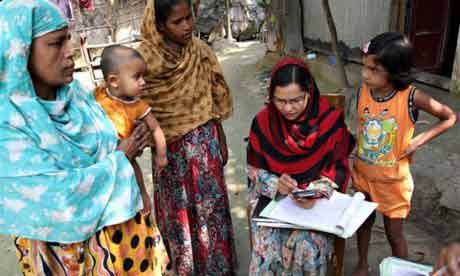
New Delhi, India (BBN)- India's progress in health outcomes during past two decades has been slower in comparison to other developing countries with comparable incomes, a latest working paper prepared by Niti Aayog said, highlighting crucial gaps in India's healthcare system.
The paper, titled 'Health Systems in India: Bridging the Gap between Current Performance and Potential' has drawn a comparison between India and other countries like China, Bangladesh, Nepal and Vietnam based on achievements under various health indicators during last 10-20 years.
In most parameters, India languishes at the bottom of the table in comparison to the other countries, reports the Times of India.
Though the government's think tank has acknowledged the achievements in elimination of polio, population control and reduction of HIV prevalence, it has pointed out significant lapses in reduction of infant mortality (IMR), maternal mortality (MMR), deaths due to infectious diseases like tuberculosis, measles etc.
For instance, pointing towards India's burden of communicable and non-communicable diseases, it says, "Despite impressive gains in per capita income, India's Human Development Index rank has stagnated since 2008, having risen by only 1 unit. In comparison to Nepal, which has risen by 4 units and Bangladesh which has risen by 2 units."
Similarly, countries like China and Bangladesh have fared much better compared to India in dealing with infectious diseases like tuberculosis and measles. In India, mortality due to tuberculosis has come down by 43.6% from 2000 to 2012, whereas in China deaths from the disease, during the same period, has dropped by 63.1%. In fact, India is also dealing with increasing problems of drug resistant tuberculosis.
India's progress in reduction of IMR and MMR has also been significantly lower than that of countries like Cambodia, Nepal, Bangladesh and others, which are at a similar stage of development and have comparable incomes, the paper said.
There is also a huge disparity between different states. While some states like Tamil Nadu, Delhi, Kerala and Andhra Pradesh have achieved millennium development goals, there are many who are lagging behind.
"States like Tamil Nadu have extremely strong health systems founded in primary care and public health. The challenge is to replicate such successes all over the country," the paper emphasized.
The paper also talks about high out-of-pocket expenditure on health along with high absenteeism of doctors.
"Enormous challenges facing the sector with limited funds at hand press the question on how to maximize returns from available resources, and also increase investments in health," the paper said.
Niti Aayog has sought comments and suggestions from stakeholders on how to improve efficiency of health care system.
While the assessment drawn in the paper pertains primarily to the period spanning between 1990 and 2013, the new government at the Centre has already taken steps to address many of these concerns. For instance, the health ministry is running various campaigns and schemes to reduce deaths due to tuberculosis. The government is now also trying to work out a system by way of which patients suffering from TB can be treated only in the public health system. This would ensure rational treatment of the diseases in turn avoiding drug resistance.
Similarly, there is greater focus on child immunisation through programmes like Mission Indradhanush to bring down infant mortality.
BBN/SSR/AD